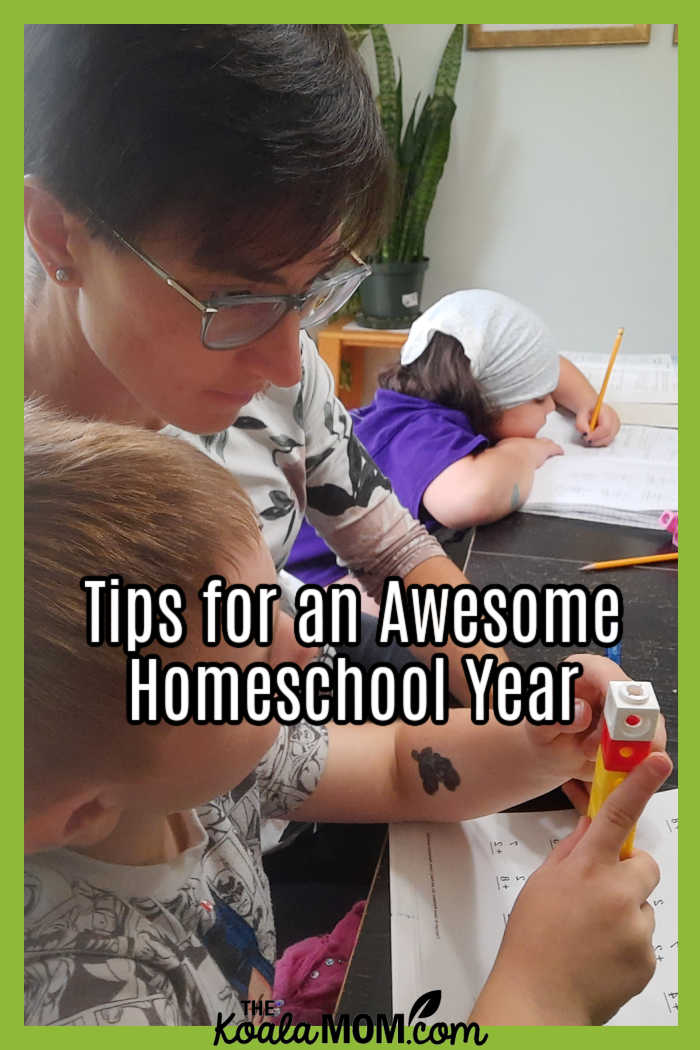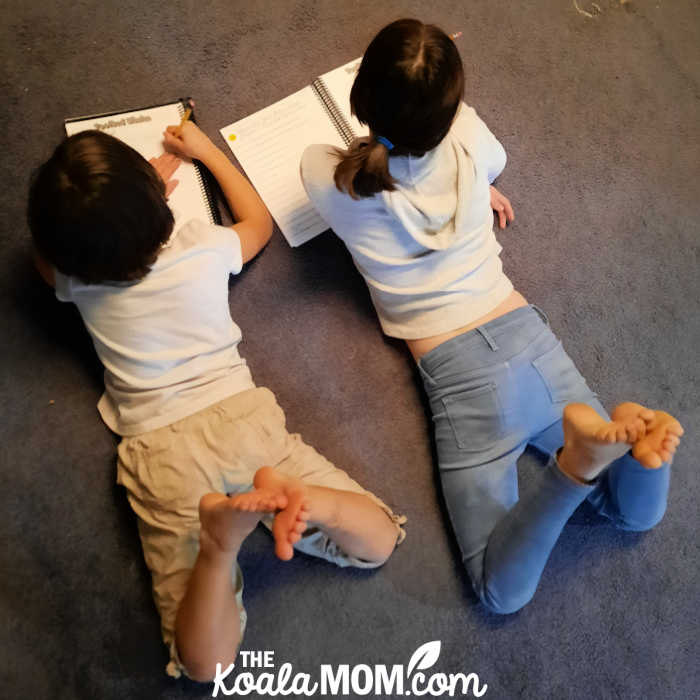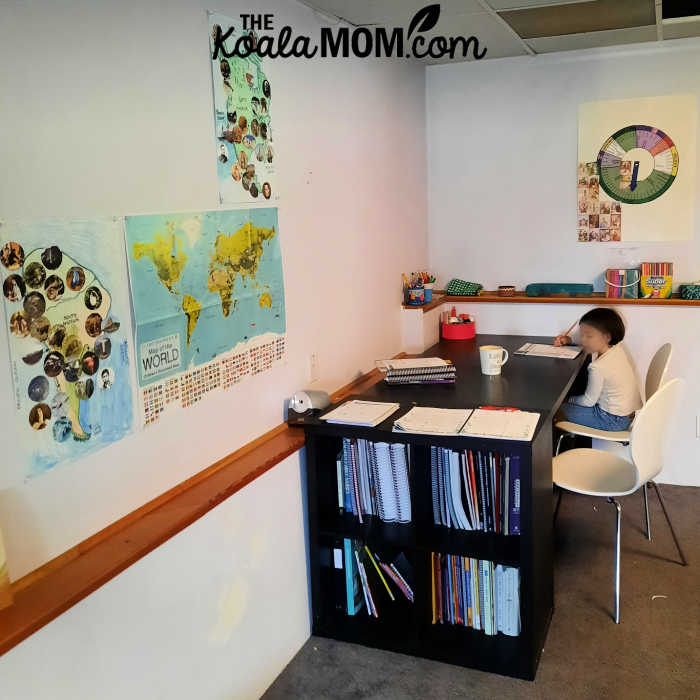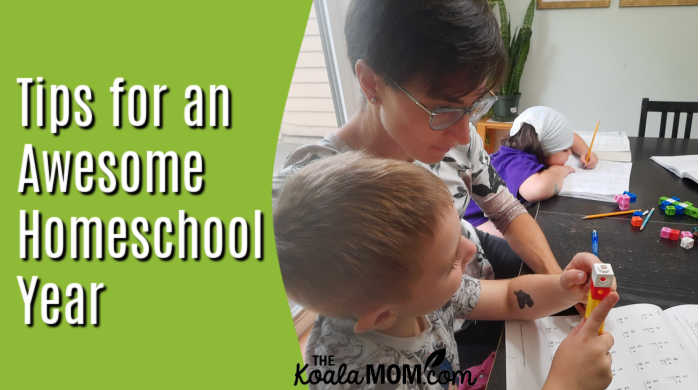Fall is one of my favourite times of year, not for the changing colours or the pumpkin spice lattes, but for the energy of a new school year. There’s something exciting about new beginnings—setting new goals, trying new activities, choosing new books and curriculum. Even if much of your school year is much the same as last year, there’s still an excitement about fresh new pages in the workbooks and planner.
As we jump into this fresh new school year, here are my tips (from a decade of homeschooling!) to help you have an awesome homeschool year.

Know Yourself
Homeschooling is a great opportunity to get to know yourself—what excites you, what bores you, what annoys you. Consider your talents and passions, your strengths and weaknesses. It can be too easy (particularly with social media) to compare ourselves to other homeschooling moms and feel that we are failing. Please remember that you are homeschooling so your classroom does not look like every other classroom (homeschool or not).
One year, I participated in a homeschool co-op with three of my best homeschool mama friends. As the four of us planned learning activities for our kids together, I realized how different we all were. Each of us brought our own strengths and abilities to the group. It was a fantastic experience not only for our kids (who enjoyed the social time and fun activities we planned) but also for me, as I got to know myself better by working with the others moms.
Take some time at the start of this school year to admit to yourself what you are good at—and what you are not good at. Consider how that affects your homeschool. For example, if you love reading aloud with your kids, plan to use your library a lot and to build learning opportunities and curriculum around good books. If you absolutely hate lesson planning, don’t invest in a curriculum that requires a lot of planning. If you are an extrovert, join a local homeschool group for support and social activities. If organization is not your skill, figure out some systems that will help you stay on track this year.
Know Your Kids
Homeschooling would be easy if each of our kids were carbon copies of ourselves. (It might also be pretty boring.) The reality is that your children are unique and diverse individuals, and likely very different from you. What works for one kid may not work for the next kid. As a homeschool mom, you know them best. Take some time this year to consider each of your kids, their needs, and how they learn.
For example, I have two children who are more extroverted and two children who are more introverted. This has affected how they learn (the extroverts tend to push back against me but put all their effort into extracurricular activities or group work) as well as what sorts of activities they want to be involved with. As an introvert, I have to balance my need for quiet time with their need for friends. Being aware of this in myself and in them helps us have conversations about this to ensure that everyone is happy during the school year.
Consider how your children interact with each other as well. In teaching multiple grades at home, it can be helpful to teach one subject to more than one child at a time. However, this can sometimes depend on how well the children work together. For example, my second and third daughter did science together one year, despite a four-year grade split between them. They both loved spending that time together exploring a topic they were interested in. The following year, when I suggested that my third daughter do science with her younger sister, I got a glare from her. The two of them do not get along in the same way. Okay, noted.

Keep Learning Fun
One of the things I most admire about my mom, from the 14 years she spent homeschooling myself and my brothers, was her excitement for learning. My twin would be rolling his eyes about having to dissect a frog for science (and staying as far away as he could), and Mom would be completely geeking out about how cool it was. You don’t have to geek out about frog dissections to be a cool homeschool mom, but foster (and model) a love of learning in your homeschool.
It can be easy to get bogged down in math workbook pages, meeting government learning outcomes, and finishing textbooks. While I don’t recommend throwing out the books, do stay open to other ways that learning happens. We like to hit our library to check out books on current topics of interest or to explore local farms, museums, trails, and more. Listening to audiobooks together often leads to discussions about what the characters are doing as well as questions that can be further explored via the Internet or library. Encourage questions; if you don’t the answer, say so, and model how you can find out more.

Declutter
We have one bookshelf in the corner of our dining room that holds our homeschooling materials. While that shelf has changed over the years of our schooling, the space we have to hold books has always been limited. At the start of each homeschool year, I pull the books off the shelf and decide what is getting used again this year, what is getting stored for a future year, and what is getting recycled or passed on. This gives me space to add the few new books we get each year.
The longer we homeschool, the less I hang onto. I’ve got a pretty good idea now of what curriculum works for us, so I’ve let go of the other books we’ve tried over the years. It can be tempting to hold onto all those awesome books about the Roman empire just in case your kids your kids want to read all about it again someday, or to keep the awesome curriculum your friend gave you even though your kids didn’t like it last year, but don’t. Clutter can be distracting. Having a neat, tidy bookshelf where the books are easy to find and grab can help a more positive homeschooling environment.
I also go through all our pencils, markers, and other materials. Throw out writing utensils that no longer work, erasers that are too small, pencils that are too short, empty glue sticks, half-used notebooks. Make a list of what materials you need but again, buy the bare minimum at the start of the year.

What tips would you add to this list?

No Responses Yet